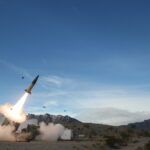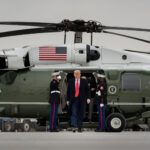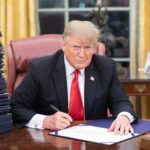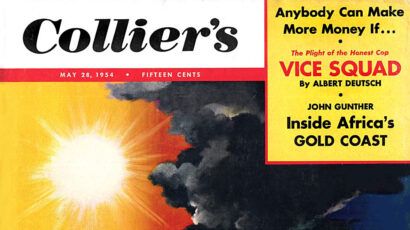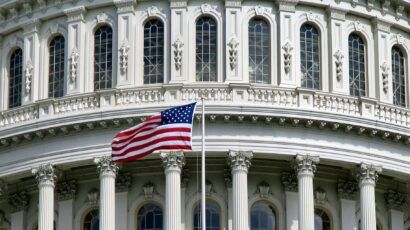The dangers of no-first-use
By Franklin C. Miller, Keith B. Payne | August 22, 2016
The Obama administration reportedly is seriously considering adoption of a no-first-use nuclear policy. Such a declaratory policy would tell the world that the United States would never use nuclear weapons other than in response to an opponent’s nuclear attack. To some, such a policy may seem attractive because it suggests a type of symmetry and proportionality with regard to nuclear weapons.
In fact, however, US adoption of a no-first-use policy would create serious risks without offering any plausible benefit.
Why so? There is no doubt that the US nuclear deterrent has prevented war and the escalation of war in the past. For example, there is considerable evidence from the 1991 First Gulf War that the US nuclear deterrent helped to prevent Iraqi leader Saddam Hussein from escalating to the use of Iraqi chemical or biological weapons of mass destruction—possibly saving tens of thousands of US and allied lives. A US pledge of no-first-use now would encourage current and future opponents to believe that they need not fear the US nuclear deterrent in response to their potential massive use of military force against us or our allies—including the use of advanced conventional weapons, and chemical and biological weapons.
Consequently, declaring a no-first-use policy would degrade the prospective credibility of the US nuclear deterrent—a particularly imprudent step at a time when Russia and China are rapidly expanding their military capabilities, pursuing aggressive policies in Europe and Asia respectively, and issuing explicit threats to US allies in the process. The same applies to North Korea, which repeatedly issues extreme threats against us and our Asian allies while maintaining the world’s fourth largest army and reportedly advanced chemical and biological capabilities. Given these contemporary realities and the stakes involved, degrading the credibility of the US nuclear deterrent by adopting a policy of no-first-use is no small matter. Our goal instead should be to maintain the most effective deterrent possible to such lethal threats.
US adoption of no-first-use would also severely shake allied confidence in our security guarantees to them. In fact, US allies Japan, South Korea, Great Britain, and France reportedly have recently informed the Obama administration that a no-first-use policy would be detrimental to their security. The vast majority of our treaty allies depend, at least in part, on a credible US nuclear deterrence “umbrella” for their security. US adoption of a no-first-use policy would compel some to take steps to mitigate the degradation of the US nuclear deterrent which has heretofore protected them. One such avenue would be the possible acquisition or creation of their own independent nuclear weapons. There already appears to be considerable popular support today for the development of nuclear weapons in South Korea; US adoption of no-first-use would only increase that motivation. A policy of no-first-use now would likely increase the prospect for new nuclear powers in Asia and Europe, which would severely undercut the Nuclear Non-Proliferation Treaty and be extremely destabilizing, given the likely severe Chinese and Russian responses.
In short, based on evidence from the past seven decades, the US nuclear deterrent helps deter war and preserve global stability by compelling potential aggressors to consider the possibility of a US nuclear response in any of their prospective plans to attack us or our allies. It also provides enormous support for nuclear non-proliferation by helping to assure over 30 US allies of their security. US adoption of a no-first-use policy would threaten to degrade this critical deterrence of enemies and assurance of allies.
Proponents of no-first-use often assert that US high-tech conventional forces could ultimately defeat an opponent’s massive use of military force, including advanced conventional weapons, and chemical and biological weapons, without the US needing to resort to nuclear weapons—and thereby claim that the US nuclear deterrent threat is unnecessary for this purpose.
This presumption of US military dominance is questionable in some key geographic areas. But more importantly, this claim fundamentally confuses the distinction between deterrence and war-fighting. We and our allies want to deter an opponent’s massive use of force from ever taking place; we do not want to be compelled to wage war, even winning a non-nuclear war, in order to recover lost allies. Fighting such a war would cause unprecedented levels of death and destruction wherever it is fought. That is why US policy for over seven decades has sought to deter war via the US nuclear deterrent, and why every Democratic and Republican administration for over seven decades has rejected a no-first-use policy. Retaining ambiguity regarding the US nuclear deterrent threat appears to be central to the success of that deterrence policy; we do not want a no-first-use policy that essentially assures opponents that they may safely ignore a US nuclear response if they themselves launch anything short of a nuclear attack. That is why key US allies also strongly oppose a no-first-use policy.
In light of this, adopting a policy of no-first-use would have to bring powerful benefits to offset the likely harm done to stability. What might these be? Advocates of a US no-first-use policy claim that US adoption of no-first-use would lead other nuclear powers to similarly do so, and thus contribute to nuclear stability.
In truth, however, there is zero evidence that US adoption of a no-first-use policy would lead others to mimic the United States. The idea that the rest of the world follows the United States in this way is itself outdated, arrogant, and contrary to considerable evidence. The failure of President Obama’s Prague Agenda to convince Russia, China, India, Pakistan, North Korea, or other nuclear powers to reduce the role nuclear weapons play in their respective security policies is a powerful testament to this fact.
Russia by its own open statements is now committed to a policy of coercive and unambiguous nuclear first-use threats and possible employment to support an expansionist agenda in Europe—which means it hardly would follow a US no-first-use agenda. Indeed, a senior Russian official recently responded to US arms control overtures by observing that Russian nuclear policies are driven strictly by Russian security needs, not by “mythical universal human values.” Other nuclear powers similarly pursue their own paths and “do not seek to emulate” the United States. And, based on China’s own open statements about its potential use of nuclear weapons, China’s existing supposed no-first-use policy is wholly ambiguous and uncertain; China cannot seriously be considered to have a no-first-use policy.
In 2009, the high level and bipartisan Congressional Strategic Posture Commission, also known as the Perry-Schlesinger Commission, concluded that the United States should not adopt no-first-use. In 2010, the Obama administration’s own Nuclear Posture Review reached the same conclusion. Since then, the international security situation has deteriorated. The spectrum of military threats to the United States and our allies has expanded considerably as Russia and China have pursued military buildups and aggressive policies in Europe and Asia respectively. US adoption of a no-first-use policy now would only reflect willful US detachment from these global realities, and would be perceived as such by friends and foes alike.
Together, we make the world safer.
The Bulletin elevates expert voices above the noise. But as an independent nonprofit organization, our operations depend on the support of readers like you. Help us continue to deliver quality journalism that holds leaders accountable. Your support of our work at any level is important. In return, we promise our coverage will be understandable, influential, vigilant, solution-oriented, and fair-minded. Together we can make a difference.
Topics: Nuclear Weapons, Opinion




